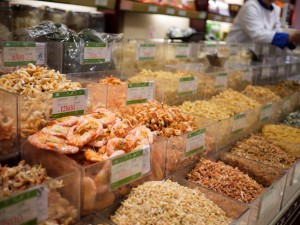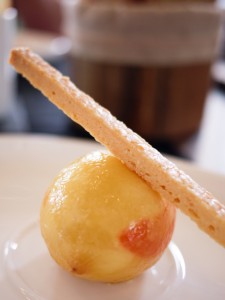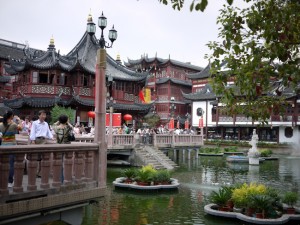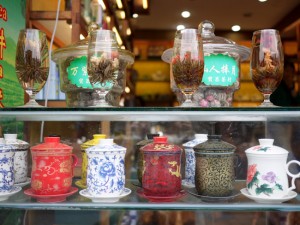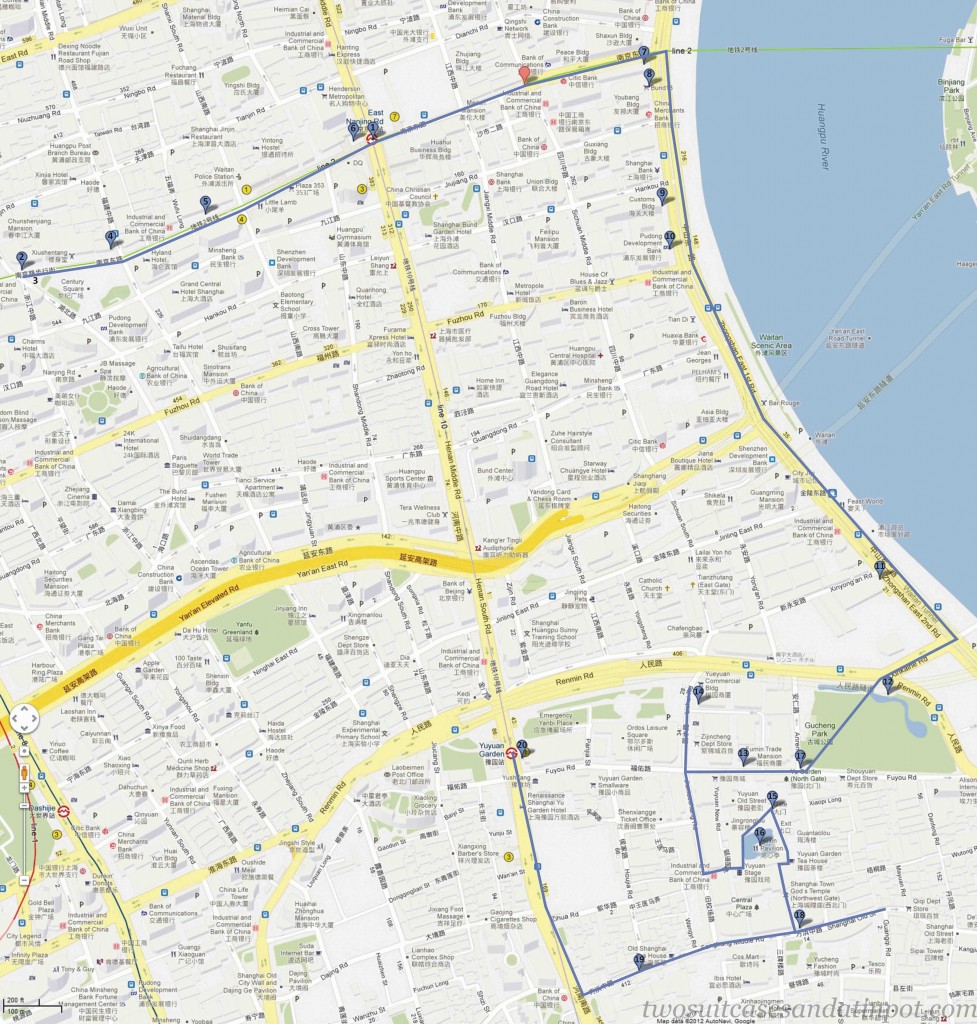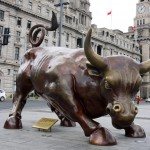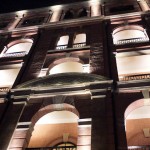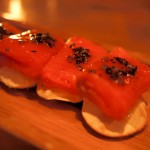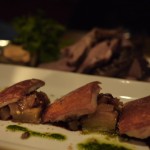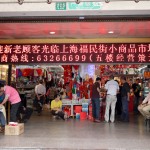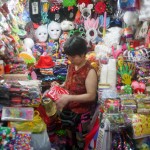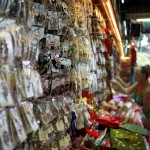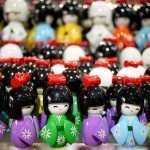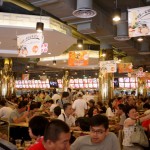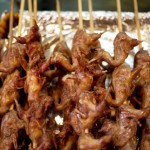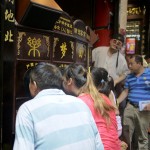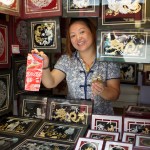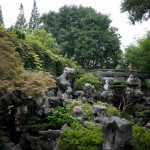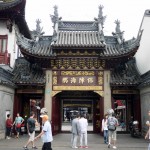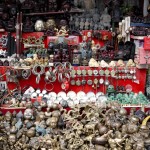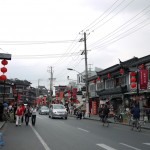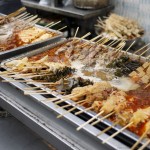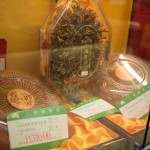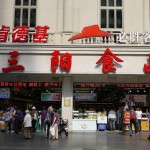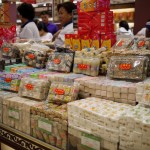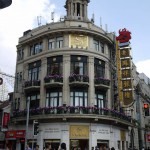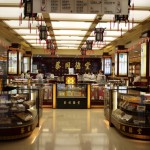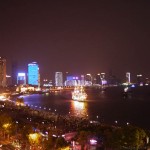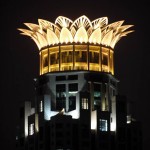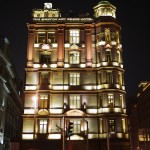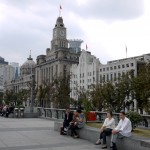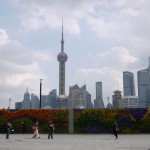Author’s note: If you have made use of this tour, please pop me a note to let me know of any changes that might have occurred so future travelers can be aware of any closures or business location changes. And if you have anything to add, please leave a comment here too. Other travelers would love to hear from you! – LK
So you have 24 hours in China’s biggest city. You’re a world-wise traveler. You have more stamps in your passport than David Attenborough’s cameraman. You prefer to do those things that are off the beaten track, far from the madding crowd, living like the natives do and all that. Hole-in-the-wall eateries, remote temples, out of the way ramshackle buildings with loads of history, original fittings and a little old man out front who will single-handedly change the way you view the world with a story about how he ones saved a shepherd and his goats. You know – all those tips that well-thumbed guidebook has told you and a million other readers to do. I get it. But if you’re only going to have one day in Shanghai, you’re probably going to want to see the Bund and Old Shanghai – probably the two most touristy spots this side of Mongolia (the pavements of Nanjing Road alone are trampled by over a million visitors a day). Nothing wrong with that. Hit the area between Nanjing Road pedestrian street in the north and Fang Bang Road in the south and you’ll see the best of all that is East and West, modern and traditional that Shanghai has to offer. Or that’s what I think.
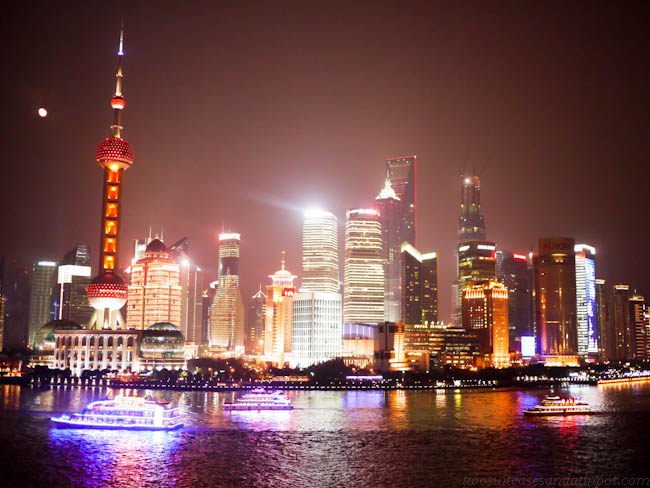
Time: Full day
Distance: 3 miles / 4.8 kilometers plus exploring
START: East Nanjing Road MTR Station (1) END: Yuyuan Garden MTR Station (20)
Exit the station on to Nanjing Road and head west. The pedestrian portion starts a little way up the road. Just because you’ve almost been knocked down four times by speeding, obnoxious scooter drivers and at least one brown car does not mean you’re not in the right place. Sidewalks are where the Chinese like to drive. Nanjing Road is Shanghai’s main shopping street and one of the world’s busiest. It is divided into Nanjing Road East (from the Bund to People’s Square) and Nanjing Road West (from People’s Square towards Jing’an District). Both Nanjing East and Nanjing West boast large department stores as well as a variety of retail outlets and restaurants. For the purpose of this tour we’re only going to head a little way up Nanjing East, mainly to get to the (2) San Yang Food Shop located at no. 630. It is not signposted in English, but you should find it easily from the gallery pic. I suppose one would describe this place as a dried grocery store. If you can dry it and eat it, it is here. And as you know, the Chinese will eat just about anything, so expect to find sea cucumbers, starfish, every possible edible mushroom and bracket fungus, a selection of shellfish that will make your eyes water, fruits, vegetables, seeds, nuts, meats (the appeal of sweet pork floss remains a mystery to me) and mind bogglingly expensive cordyceps fungi with their caterpillar hosts. There is also a massive selection of traditional Shanghainese sweets and snacks as well as cured meats and fowl. It is a fascinating place, especially if it is your first introduction to the oftentimes weird and wonderful world of Chinese cuisine. Find the ladies selling the cookies and palmiers and try a few of their pineapple crisps. Delicious! If time permits you can continue heading west towards People’s Square and Nanjing West with all its luxurious boutiques where all the larny people shop, but we’re going east.
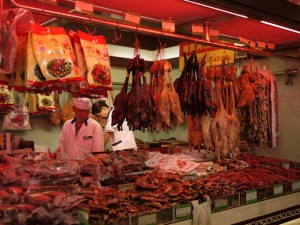
Just outside San Yang is (3) Chez l’Ami. This is a good place to quench your thirst (you have been walking for all of twenty minutes after all) and do a bit of people watching. Yes, it is very, very French and as such is a bit of a shameful cop-out on day one of your big Chinese adventure, but it is one of the few places with seating right on the street.
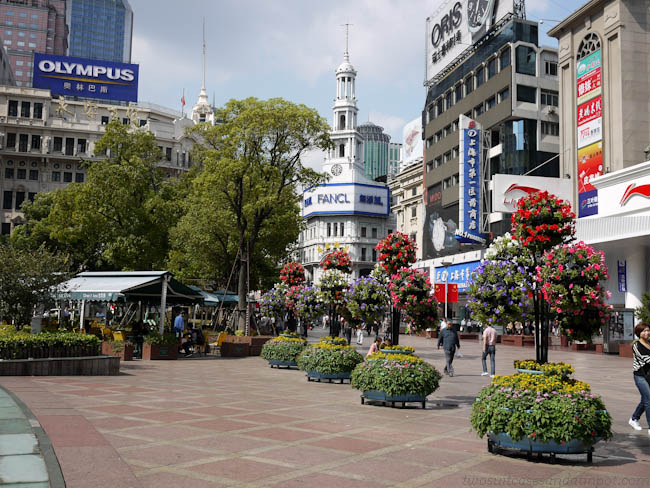

Continue heading east towards the Bund. (6) South Beauty is a chain restaurant located in the Henderson Metropolitan and is a good bet if you’re looking for traditional Shanghainese and Szechuan food but are too scared to try street food. My suggestion though is to keep walking. Shanghainese street food is safe, delicious and cheap and available everywhere. Get your first taste right here at the little cafe on the street corner (opposite Lao Feng Xiang Jewellers Store with its floral wreaths). It’s easy to spot – there is probably a queue thirty people deep standing in line for (4) pork moonpies sold from a little window on the side. These savoury pastries are absolutely stuffed with pork mince filling and encased in a crispy, flaky shell. And at around US$0.50 a piece, it’s a deliciously cheap way to fill your tank. There’s a veggie version too. Look out for the red lanterns of (5) Cai Tong De pharmacy a little further along. Opened in 1882, this pharmacy is famous for its traditional Chinese medicine. The four-story building sells medicinal herbs, herbal pieces, medicinal liquor, beauty treatments, health care products and some expensive tonics such as ginseng and pilose antler. If you’re running low on sheep placenta, donkey hide gelatin or deer penis, this is the place to stock up. I always wonder who the first person was to think, hmmm, let’s rub a bit of this on and see what it does? The rest of the road down to the Bund is chock full of boutiques and stores including an Apple store and the massive, newly opened Forever 21 if you’d like to kid yourself.
(7) The Swatch Art Peace Hotel is named after the Swatch watch shop on the first floor. The Renaissance style building was constructed as the Palace Hotel in 1908. It has a brick veneer structure with six stories reaching 30 meters in height. The rooftop terrace has spectacular views of the city skyline and is a fantastic place to try a few cocktails (many with champagne if you’re feeling particularly celebratory) as the sun goes down. It also has a lovely view of my favourite art deco building in Shanghai – the Imperial Crown of the Westin Bund Centre.
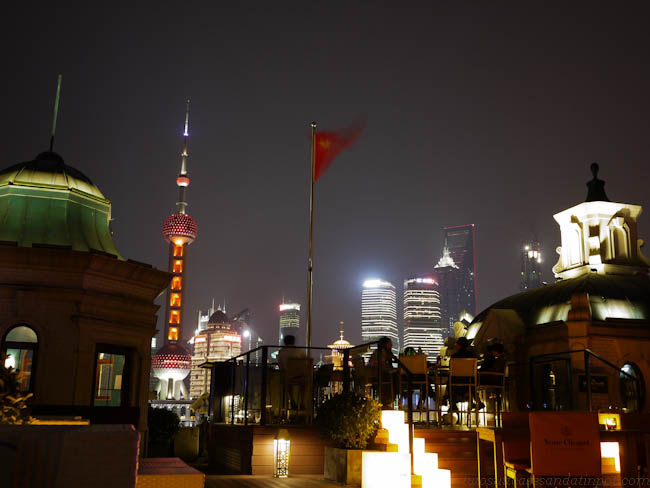
Right next door is (8) The Bund 18 – a high end commercial bar and restaurant complex in a neoclassical style building that received the UNESCO Asia Pacific Heritage Award in 2006 after two years of careful restoration. The building houses the well known French eatery, Mr. & Mrs. Bund. Stop here for dessert. No, it doesn’t matter if it’s only eleven in the morning and you haven’t even eaten lunch. Just stop here for dessert anyway! With his Lemon & Lemon Tart, chef Paul Pairet does things to this little yellow citrus fruit over a period of 72 hours that will have you jumping up and down in your seat and clapping hands like a giddy little girl. At least, that’s what it did to me. A paper thin, whole candied lemon rind is filled with lemon sorbet, lemon curd and vanilla chantilly and served with sablé (shortbread biscuit to you and me). At 100RMB (US$16) a portion this is a dessert you savour mouthful by creamy, tangy, citrussy mouthful. But you can tuck in to a complimentary amuse-bouche before you start – impossibly light and airy but beautifully flavoured tuna mousse served in a re-purposed tuna can with crispy melba toast and other breads, so you’re getting your money’s worth. If that doesn’t convince you, they have teeny, tiny chairs specially for your bags! Now how cute is that?
Keep heading south along the Bund. Named after the Persian word for embankment, this one mile stretch along the Huangpu River is lined with dozens of historical buildings. There are benches all along the promenade where you can relax and look over the river at the view of the Oriental Pearl Tower, Shanghai World Financial Centre and the Jin Mao Tower that dominates the Pudong skyline. The Shanghai Tower – currently under construction to the right of the Jin Mao Tower – will be the tallest building in China when completed in 2014. The living walls lining the river side are a spectacular site and change with the seasons. (9) The Shanghai Customs House houses a massive clock tower known as Big Ching. At 90 meters tall it is the largest clock tower in Asia, with each of the four clock faces measuring over 5 meters in diameter. The bell was modeled on London’s Big Ben and when it chimes it feels a little like you could run into the Queen at any moment (like you do on an average day in London.)
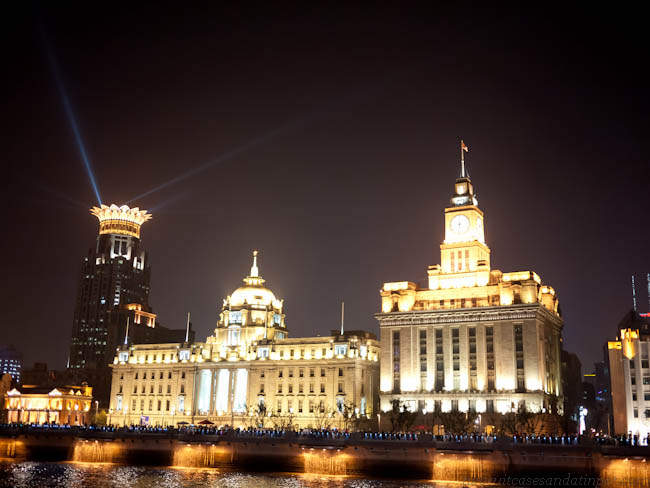
(10) The HSBC Bank (now the Shanghai Pudong Development Bank) is a six storey neoclassical building with 4 storey high columns, archways and a dome, the base of which is decorated with a triangular structure in imitation of Greek temples. Opposite the bank is a bronze sculpture – The Charging Bull Statue. It was designed by Arturo Di Modica – the same artist who created the Wall Street version. It is the same size as the one in NYC however, as requested, the bull is redder, younger and stronger than the Wall Street version, looks up instead of down and is twice as heavy to symbolise the energy of the local economy. Mine is bigger than yours. Due to its anatomical correctness, it’s best to view it from the river side.
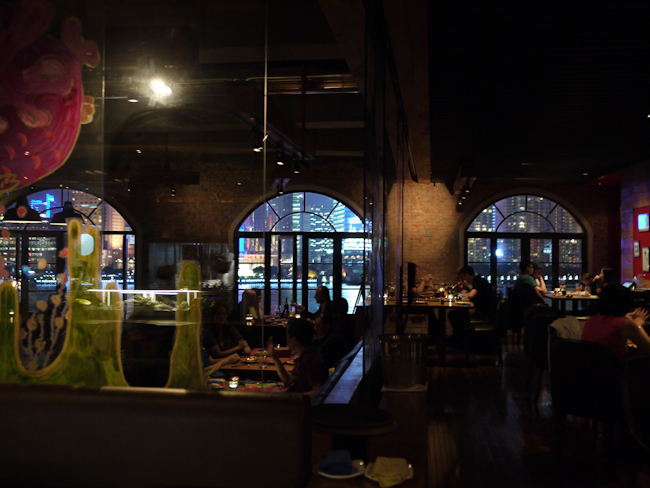
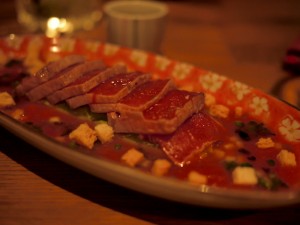
El Willy is a Spanish tapas restaurant located in the (11) South Bund 22 complex. The restaurant is filled with warm, raw wood and glass panels decorated in hand painted, rainbow hued fish and other sea creatures. It boasts spectacular views over the Huangpu river from every table. It was here that I got a little teary eyed over a plate of food for the first time ever. The dish was the Explosive Balik Salmon with Truffled Honey and Sour Cream. I sat there slowly savouring each earthy, sensory caressing bite and cried a little out of gratitude that I could’ve experienced that. The food, the drink, my Bush Man, our surroundings – all of it was rendered more special by every blessed mouthful. Now I don’t want to be like one of those people who say “OMG! You have GOT to see the new James Bond movie! Best. Bond. Ever. EVER!”. Because you just know it’s going to be disappointing then right? It’s completely possible that that second cocktail had gone to my head and the day leading up to that moment had just been spectacular. But I do want to make sure you don’t miss out on this place. Order a Caipirinha and a few tapas and enjoy the lights, the view, the colours and the miracle that is our sense of taste. Life would be so much bleaker without it.
Continue heading South(ish) until you hit Xinkaihe Road. You will see (12) Gucheng Park across the street. This is the north eastern corner of the Old City. Renmin Road in the North and Zhonghua Road to the South West now run where the city walls used to be. Cross diagonally through the park until you reach Fuyou Road. Turning left will lead you down a narrow little road brimming with mom & pop shops, eateries and vibrant local street life where you can find all sorts of bric & brac, including lovely Chinese calendars. Or turn right and head west. Here you will find the (13) Small Commodities Market. It’s worth going inside to see the conditions some people happily work under, just so that you will never moan about your crappy job again. The market is packed with hundreds of little shops (some only a few feet wide) selling everything from cello-tape to kitchen gadgets, musical instruments to spark plugs, gift boxes to rainbow coloured slinkies. If you need it, it’s here. Haggle hard.
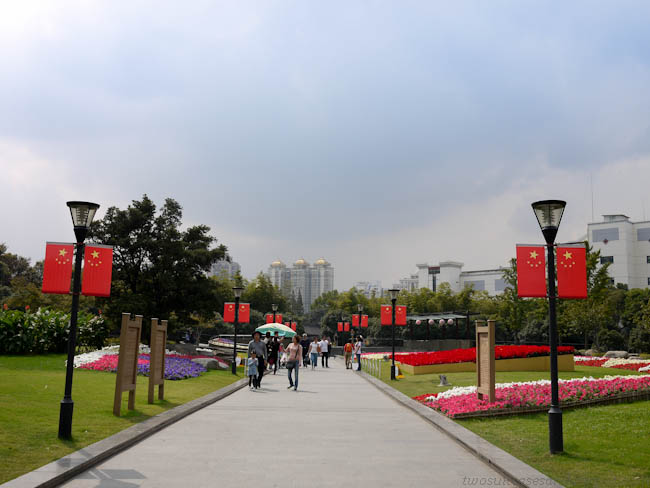
If you want to do a bit of cheap and cheerful jewelry and scarf shopping (and let’s face it, who doesn’t?), walk to Jiuxiaochang Road and turn right. Here you will find a strip of (14) 10RMB shops and, as the name suggests, everything here is 10RMB a piece. There are gorgeous silk (or a close approximation) scarves and fabulous costume jewelry pieces, souvenirs, silk purses, figurines, decorative chopsticks and other gift items for sale. I really don’t know how they can make things for these prices, let alone make a profit. You WILL find yourself saying “And this? Is this only 10RMB??” quite a few times. The answer is yes. Yes it is. Try not to think about what that means. There’snosuchthingasasweatshop. There’snosuchthingasasweatshop.
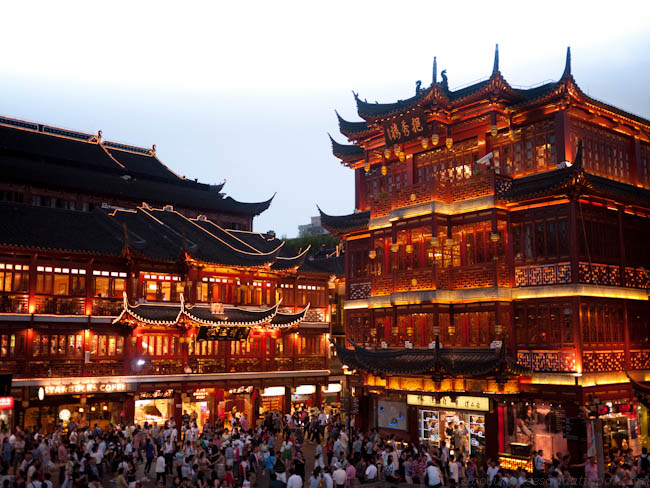
Now turn back and head South towards Yuyuan Gardens. The buildings surrounding the gardens make up a pedestrian area known as (15) Yuyuan Bazaar (or Yuyuan Tourist Mart or, confusingly, City God Temple), its streets lined with beautiful old buildings (well, ancient but renovated ) and loads of shops and restaurants. It can be a bit kitschy at times, but there’s lots to see and it’s beautiful at night when it is all lit up. There are various entrances to the bazaar, so just get inside and start exploring – there are English signposts on every corner. Entry to the market is free of charge and opening hours are 8:30 – 21:00. Although the area can get incredibly busy, it really is worth spending a few hours here for a quick rundown on Chinese history, culture, religion, architecture and art. Artisans making everything from engraved jade and handmade kites to painted scrolls and intricately woven bamboo leaf figurines eagerly share their knowledge of their wares with you. Goods are priced slightly higher than in the surrounding streets, but not exorbitantly so and you can always haggle. Hefeng Mansion Old Town Snack Palace is a colossal buffet style restaurant serving every conceivable dish and snack from 16 Chinese sub-cuisines. If you need a quick overview of all that this city has to offer in terms of traditional cuisine, this is the place to come. It’s loud, gaudy, commercial and cheap, but you’ll get the idea. Nan Xiang Steamed Bun restaurant is another popular eatery and a good place to try these quintessential Shanghainese snacks. Just head towards the lake in the middle and stand in the queue you see there. In the alley just next to Nan Xiang, there are vendors selling jelly juices (weird, but oddly addictive!), little deep fried birds on a stick and all manner of other snacks. Be warned though that despite this being a tourist hotspot, English is a little thin on the ground (and on the menus) here. Deep fried soft shell crabs are a must try. The market has a variety of kid friendly activities like a puppet show and a photo studio where you can dress up in traditional outfits.
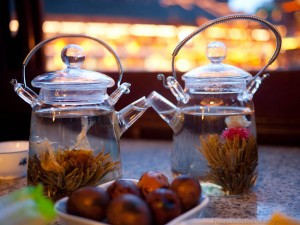
In the center of the market, in the middle of the lake is (16) Huxingting Teahouse. This pagoda style teahouse (the oldest in Shanghai, built in 1784) is built on stilts and is accessible via the zigzagging Nine-Turnings-Bridge, so designed to keep bad spirits away. (Really, if a spirit is so stupid that he can’t figure out how to go forward if he can’t go in a straight line, then he can’t be all that scary now, can he? Just walk around the corner and that’s him, thwarted.). Prices are a tad inflated here, but the tea comes with assorted snacks – soy braised quail eggs, tofu, olives and sticky tea cakes (that’s probably not selling it though…). The teahouse was used as a base of operations by the British army for several days in 1842 and Queen Elizabeth II once stopped here for a cuppa. Find a seat at a window, order one of the beautiful opening flower teas (check the prices first!) and watch the world go by below you. It seems most of it is here anyway. And while we’re on the subject, if it is your first time in China – especially if you’re a gullible, trusting, single guy – familiarise yourself with the teahouse scam. Don’t get caught out just cause she’s pretty!
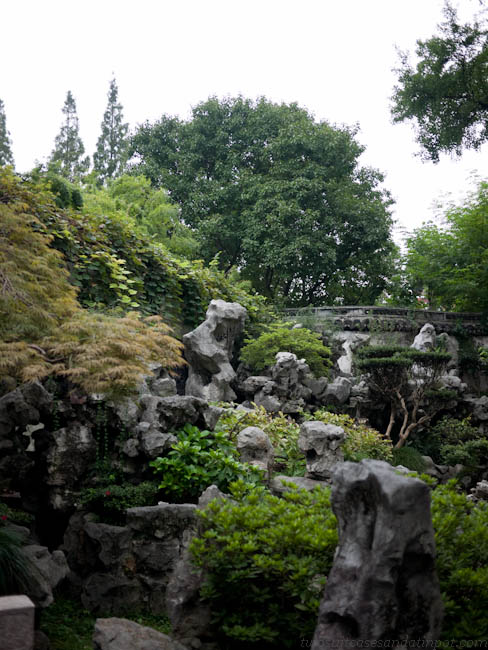
(17) Yuyan Gardens (“Garden was built to please ones parents” – shees oke, what happened to gift vouchers at the CNA?) was built in 1577. Think about that! Jan van Riebeek wasn’t even an itch in his father’s crotch and these people were gardening! This Ming style garden stretches across 2 hectares and features various bridges, pavilions, towers, ponds, paths, walls and halls.There is also the odd plant. There are many cultural relics to be seen. The Exquisite Jade Rock is one of the centerpieces of the garden. A porous 3.3-meter, 5-ton boulder rumoured to have been salvaged after the boat transporting it to the Imperial Palace in Beijing sank off Shanghai. Entrance is RMB30 per person.
(18) The City God Temple (or Chenghuang Miao) is a Taoist temple established in the 15th century. After undergoing many changes and handovers, it was restored to its former use as a temple in 1994, with resident Taoist priests. The temple is dedicated to three city gods and consists of six halls spread over a thousand square meters. Entrance is RMB10 per person.
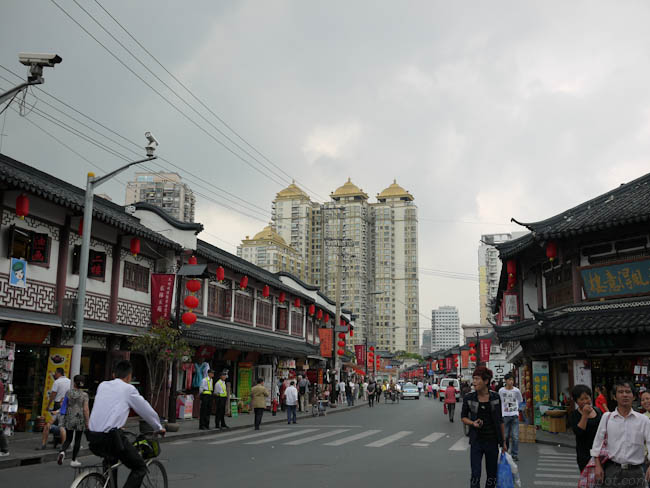
(19) Fang Bang Middle Road has absolutely nothing to do with liking vampires a lot. This 825 meter long street (also known as Shanghai Old Street) runs from South Henan Road in the west to Renmin Road in the East. It has miraculously survived the bulldozers that have flattened many other old buildings in the name of progress in this rapidly modernising city. The ancient buildings reflect the architectural style of the Ming & Qing dynasties with black tiles, white washed walls, upturned eaves, smoke spewing dragons and red pillars. Little alleyways branch off from the main road in a maze of shops, homes, eateries, workshops and markets. This is the perfect place to explore and get a sense of the chaos, customs, history, smells and picturesque squalor in which some of the locals still live. All manner of street food is sold here, including stinky tofu (do it! I dare you!). Fang Bang is a typical, Shanghainese, anything goes mishmash of food stalls, clothes shops, art galleries, antique dealers, tea houses and Tibetan crafts and jewelery with everything in between.
Once you are outshopped, outeaten and outcultured, you can head to (20) Yuyan Gardens Station and find your way home or stroll back along the Bund to see the city at night. The metro starts closing at around 22:30, depending on the station.
Got another day to kill in Shanghai? Check out my self guided walking tour of the Former French Concession Area.
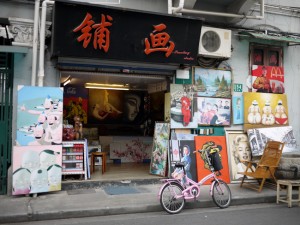
- 10. Charging Bull.
- 11. El Willy at 20 on the Bund. (It’s on a need to know basis.)
- 11. El Willy Explosive Balik salmon with truffled honey and sour cream
- 11. El Willy Suckling pig with pear tatin, pistachios and port sauce
- 13. Small commodities market
- 13. An entire shop at the Small Commodities Market. Still think your office needs more windows?
- 14. Everything is 10RMB!
- 15. Dolls at Yuyuan Gardens Bazaar
- 15. Hefeng Mansion Shanghai Old Town Snack Palace
- 15. Kites.
- 15. Little birds were killed during the making of this snack.
- 15. Puppet show at Yuyuan Gardens Bazaar
- 15. Vendor at Yuyan Gardens Bazaar.
- Yuyuan Gardens.
- 18. City God Temple entrance
- 19. Brick ‘n Brack on Fang Bang Middle Road
- 19. Fang Bang Middle Road
- 19. Food on a stick on Fang Bang Middle Road
- 2. Cordyceps fungus on caterpillar host at San Yang.
- 2. Dried mushrooms at San Yang.
- 2. Meat floss at San Yang.
- 2. San Yang Food Mart
- 2. Sweet treats at San Yang.
- 4. If you see this building, stop and look to your left! Here be pork moonpies.
- 5. Cai Tong De interior
- 7. Huangpu river from Swatch Art Peace Hotel
- 7. Imperial Crown at the Westin Bund.
- 7. Swatch Art Peace Hotel
- 8. The Bund promenade
- 9. Living walls along the Bund.
